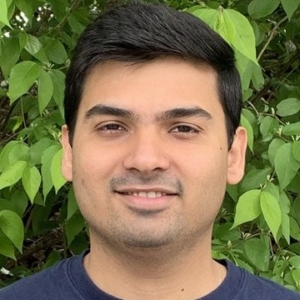MEDIA ANALYTICS
PROJECTS
PEOPLE
PUBLICATIONS
PATENTS
About
Adarsh Modh is a Senior Associate Researcher in the Media Analytics Department at NEC Laboratories America. He received his Bachelor of Technology (B.Tech) in Electrical and Electronics Engineering from the National Institute of Technology, Surat, and his Master of Science (M.S.) in Electrical and Systems Engineering from the University of Pennsylvania. His interests encompass the exciting intersection of robotics, computer vision, and machine learning.
At NEC, he focuses on computer vision and real-time video analytics. With a strong engineering background and research experience in visual 3D Scene Understanding, he contributes to building AI pipelines that power autonomous vehicles, robots, and intelligent surveillance.
Adarsh’s recent work includes optimizing inference workflows for edge deployment and training lightweight vision models that maintain high accuracy in resource-constrained settings. He plays an active role in translating research prototypes into production-ready platforms that support NEC’s mobility solutions.
Projects
Autonomous Driving
Overview: While autonomous cars are rapidly becoming a reality, it remains a challenge to scalably deploy them across geographies and conditions. Our full-stack autonomy solutions include perception, prediction, planning, simulation and DevOps that leverage the latest advances in generative AI, neural rendering, large language models, diffusion models and transformers.
Embodied AI
Overview: We develop embodied agents for robotics applications that require exploration, navigation and transport in complex scenes. Our modular hierarchical transport policy builds a topological graph of the scene to perform exploration, then combines motion planning algorithms to reach point goals within explored locations with object navigation policies for moving towards semantic targets at unknown locations.
Prediction and Planning
Overview: Our methods such as DESIRE, SMART and DAC achieve various capabilities such as diversity, scene consistency, constant-time inference and multimodality that adheres to lane geometries and driving rules.




